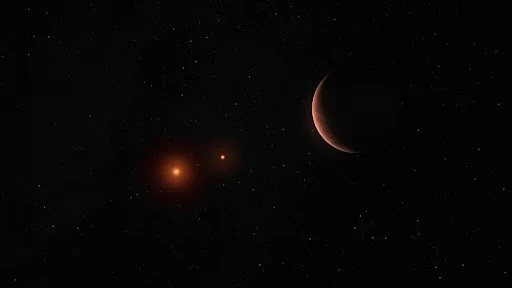Living on Tatooine, the iconic desert planet orbiting twin suns in "Star Wars," would be a harsh and challenging existence, as depicted in the fictional universe. However, considering real exoplanets orbiting binary star systems gives us a more nuanced perspective:
The Double Sun Experience:
- The most striking feature would be the two suns in the sky, creating unique light patterns and the famous "double sunset." The length of the day and the intensity of light would vary depending on the orbital dynamics of the binary stars.
- There would be subtle seasons influenced by the planet's orbit around the binary system. The distance from each star would change throughout the year, leading to variations in temperature and potentially affecting weather patterns, though Tatooine is consistently portrayed as arid.
The Environment:
- Tatooine is characterized as a desert planet, implying extreme heat, limited water resources, and frequent sandstorms. Survival would necessitate adaptation to these harsh conditions.
- Moisture farming, as seen in the films, might be a necessity to collect atmospheric water vapor for drinking and agriculture.
- Indigenous life forms, like the womp rats, banthas, Sarlacc, and Krayt dragons, are adapted to this environment, and some could pose threats to human settlers.
Human Habitation and Culture:
- The presence of human settlers in the "Star Wars" universe suggests that survival is possible, likely through technologies and adaptations not fully explored in the films. They often live in subterranean dwellings to escape the intense heat.
- Tatooine's location near key hyperspace routes makes it a hub for smugglers, criminals, and those seeking to avoid the authorities, contributing to a lawless element.
- Scavenging from shipwrecks is a means of acquiring resources.
- Distinct settlements have formed, indicating pockets of community and civilization amidst the harsh landscape.
Real-World Exoplanet Analogues:
- Astronomers have discovered circumbinary planets – exoplanets that orbit two stars – confirming that such celestial bodies exist.
- The Kepler-16b exoplanet is often referred to as a real-life "Tatooine." It is a cold, Saturn-mass planet orbiting a binary star system.
- Recently, a Tatooine-like world orbiting two brown dwarfs was discovered with a unique perpendicular orbit, highlighting the diverse orbital configurations possible in binary systems.
- Research suggests that some circumbinary planets could potentially be habitable if they are located within the habitable zone of their stars and can maintain stable orbits and sufficient liquid water.
In Conclusion:
While the fictional depiction of Tatooine emphasizes a desolate and challenging existence, the reality of exoplanets orbiting binary stars reveals a more complex picture. Such planets could have varying environments and potentially even conditions suitable for life, depending on their specific characteristics and the nature of their twin stars. Living on a real "Tatooine" would undoubtedly be different from Earth, but the possibility of habitability in such systems is an exciting area of ongoing scientific exploration.

